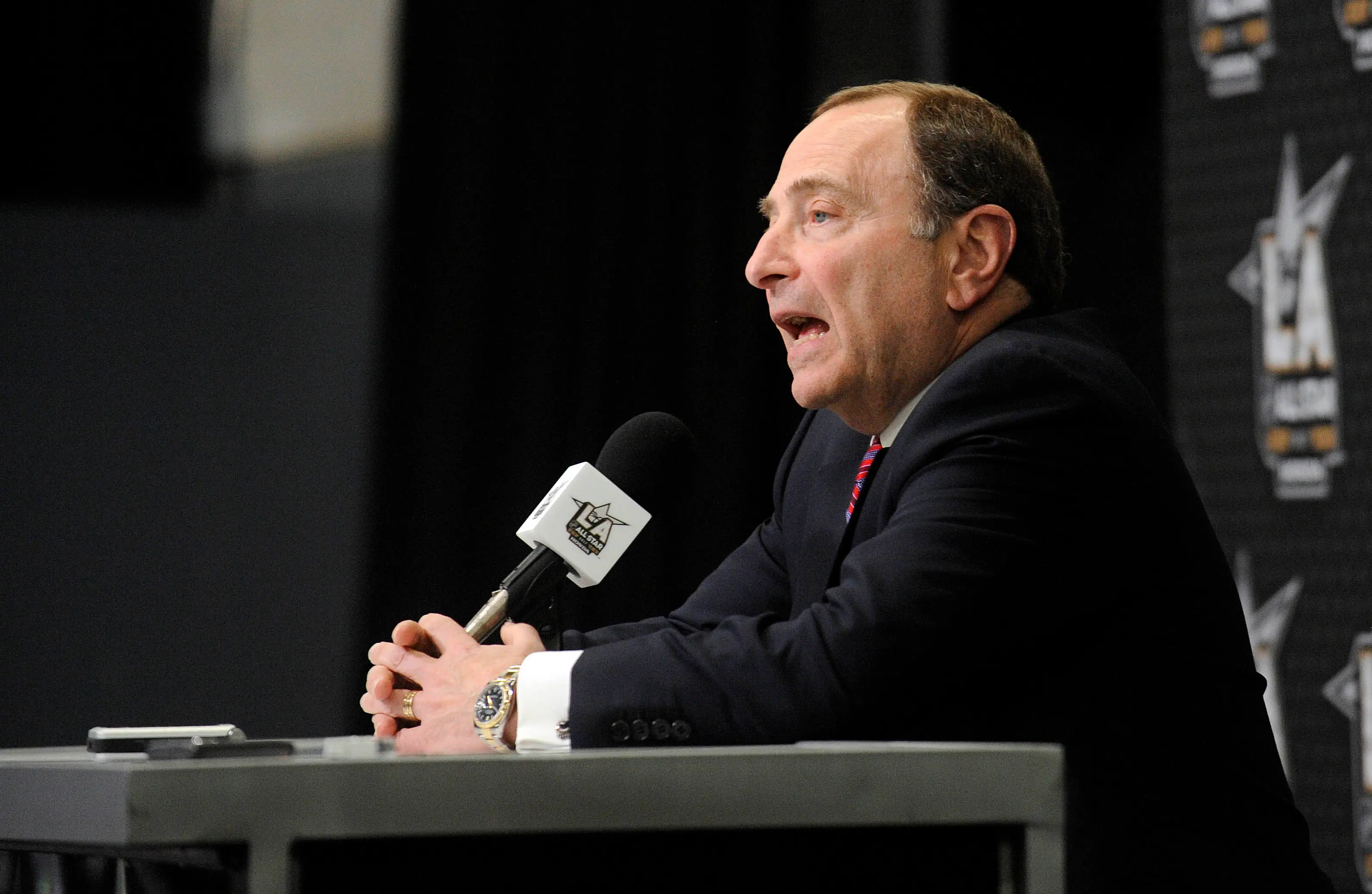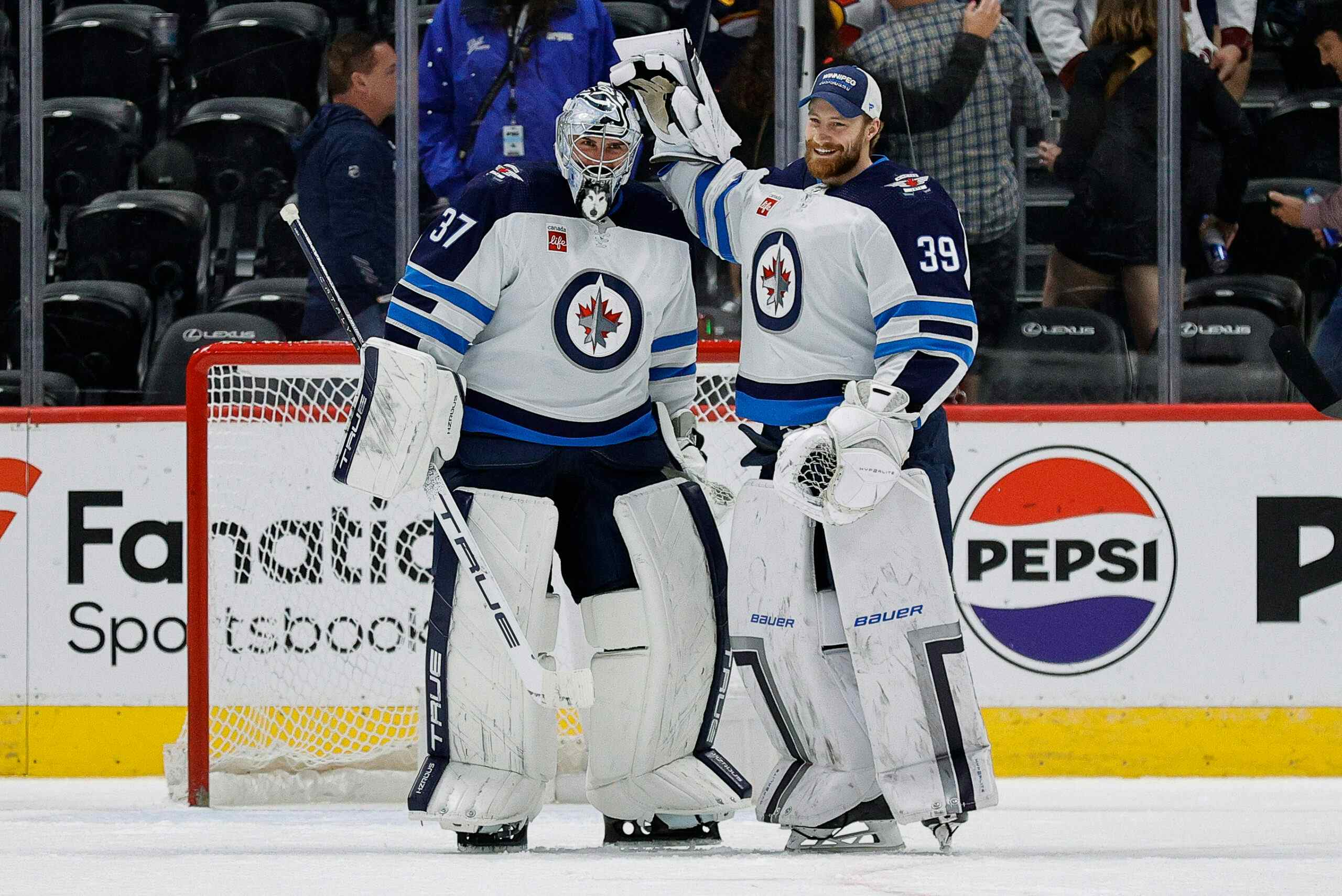Three Changes The NHL Should Make

This weekend current NHL commissioner Gary Bettman, is going to be inducted into the Hockey Hall of Fame under the builder’s category. Regardless of what your feelings of him are, it’s hard to deny that he has had a major impact – positive and negative – on the game. Under his watch the game of hockey we know now is certainly different in many ways from the game we had when he took the job in 1993. Games no longer end in ties, lines to the playing surface have been added and removed, Winnipeg both lost and gained a team under his watch which always makes for conflicting emotions for Jets fans.
His work and decisions have often been second-guessed by many a hockey fan and media pundit and who among us hasn’t played a game of “if I was commissioner for a day..”
With things a bit quiet on the Jets front as the team resets from it’s Finland trip, let’s play that game. Here are three things I’ll be changing once 31 NHL owners come to their senses and name me the second NHL Commissioner.
Video reviews are no longer than 1:30
For the most part, I really don’t mind video reviews as it’s structured now, but last season and even still even in some instances this season we’re seeing reviews come down to the game officials seemingly looking for a reason to overturn a call on the ice which shouldn’t be the main reason behind video reviews.
Sometimes in an effort to find something to overturn, these reviews can take two or more minutes, they can last an entire commercial break.
Nothing says “excitement” like a bunch of fans watching a bunch of officials at the scorers bench wait on the phone with some guys in Toronto who are watching a single play and over, right?
Time to put an official time limit on these reviews. One minute, thirty seconds. Start the clock the moment the call gets made to Toronto. They have that long to look at a play two or three times, maybe zoom in if they can, and figure it out. If they can’t see any conclusive proof in that time, the phone goes dead and the refs have no choice but to stick with the original ruling on the play.
Yes they’ll get some of those reviews wrong, but how is that different from what’s happening now? If you’re going to get it wrong, at least be quick about it so we can move on.
Oh and while we’re at it, two other small things I’d like to change about the whole review process.
One, before you go review things, make an announcement of what the ruling on the ice is and what is being reviewed. Usually it’s pretty obvious, but a heads up – especially for the fans in attendance – would be nice.
Two, if you can’t find any reason to turn a play over then just tell us that. Instead of the standard “ruling on the ice stands” decree, tell us “there is no conclusive evidence to overturn the call” .. yes, fans will still bitch about it, but at least we’ll have a better idea of what if going on.
And I know once in a while both of these things happen with a ref who is on top of his game, but I’m just saying it should happen every time.
True three point games
When two teams are tied in the standings, the first tie-breaker is regulation wins. The idea is that one team winning more of their games in regulation than the other should get them the edge in the standings and this is absolutely correct.
But it’s the only time the idea of regulation wins seems to be of any benefit to a team.
Let’s take a team with a 46-28-8 record with 42 of those being regulation victories. A team that finishes the season with a 48-28-5 with only 39 regulation wins actually finishes a point higher in the standings with 101 points as opposed to the first team’s 100.
We’re basically rewarding teams more for being good at shootouts and three on three overtime play than we are actual hockey victories earned within 60 minutes of regulation.
Under a true three point system (or 3-2-1-0 where a regulation win is worth three points, an overtime/shootout win is worth two, an OT/SO loss is worth 1 and a regulation loss is worth 0) the standings would have actually changed a fair bit in the East last season. with the Panthers qualifying on the strength of having more regulation victories while the Columbus Blue Jackets would have missed out.
Players drafted by their original team only have 4 million of their salary count against the cap
Here is what I think may be my craziest idea yet and it kind of borrows from the idea of the NBA’s “Supermax” rule and admittedly one that would benefit a team like the Winnipeg Jets who have developed and seen a fair share of their draft picks become major parts of the team.
Imagine the Jets being able to pay Mark Scheifele, Patrik Laine, Jacob Trouba, Josh Morrissey, Nik Ehlers, Kyle Connor and Connor Hellebuyck a grand total of 50 to 55 million dollars worth of contracts next season, but only 28 million of that counts against the salary cap.
Toronto fans, worried about how to fit in all your young superstar players? Suddenly that’s not as much of a worry if the nine million your team may have to pay Matthews and eight million you may have to give to Nylander only has four of it count against the cap.
Edmonton fans would maybe breathe a bit easier if McDavid’s cap hit wasn’t the highest n the league, but then again Peter Chiarelli would probably just take the extra cap space and sign Ron Hainsey to a four year, four million per deal because he’s Peter Chiarelli.
This would only apply to players drafted by their original team and once they’re traded, that whole thing becomes null and void even if they get traded and then want to sign back with the team that traded them away a season or two later.
The idea is to encourage teams to hold on to their drafted players, develop around them and hopefully have more “loyalty” from both sides. Last season Daniel and Henrik Sedin along with Henrik Zetterberg were the latest players to retire having only ever played for one NHL club for more than 10 seasons. It’s a pretty exclusive list and one that we may see fewer and fewer people join as we continue on in a hard salary cap world where even if teams want to pay their rookies coming out of ELC contracts, they do so trying to walk a tightrope of leaving enough room under the cap to operate a full roster, but still being fair with a player they’d other wise give full market value dollars to.
Recent articles from Art Middleton





